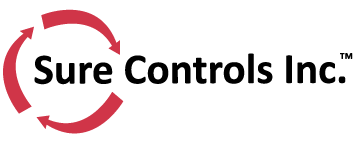Drive and Motor Troubleshooting 101
By: Jeff Blom
In many industrial and commercial plants, automation of any process and associated control relies heavily on motors, and variable frequency drives (VFDs). When a motor or drive goes down, production often grinds to a halt. Approximately 50% of the service requests we receive are related to motors, drives, or associated equipment. Drive and motor troubleshooting must be done in a fast effective manner by utilizing intuitive and logical thinking.
The first step is to ask questions

Talk to the operator of the equipment; talk to other mechanics working in the area; talk to anyone that might know anything about the equipment or any unusual activity near it. As a detective (troubleshooter), your job is to get the facts and get the equipment back up and running.
Here are some types of questions that you can ask.
- When did it stop working?
- Has anyone else recently attempted repairs or modifications?
- Have there been any recent changes or additions to the load?
- Is this a random failure or has this been happening for some time?
The better your understanding of the events surrounding the failure, the more accurate and faster your drive and motor troubleshooting can be. After asking your questions, you can then begin looking a little closer.
Drive and Motor Troubleshooting

Check for fault codes. Most VFD controllers include an interface to set up the drive for operation and to display information about its operation. Although the information displayed varies, most controllers will display error or fault code information such as high current trips, high and low voltages on the input and output sides, high temperatures, internal faults, and even offer advanced power diagnostics.
Check the connections. If the fault codes can’t help you track down the problem, check the connections. Loose connections are among the most common causes of faulty operation in VFD applications. Just eyeballing a connection is sometimes enough to know it is loose. You can also check for a voltage drop across the connection if you’re still powered up – or resistance through a connection if you’re powered down. Don’t forget to isolate the connection to get a reliable reading.
Check temperatures. Checking the temperature of connections with a temperature probe or IR-thermometer is one way to tell if they’re loose. They should never be hotter than the connecting wires. You can check temperatures in the drive and at the motor. For example, if the motor insulation is unsuitable for VFDs, it will gradually degrade until it develops a short. Such shorts are often too small to blow a fuse, and too intermittent to trip an overload – but enough to shut down a controller. An IR thermometer can show what’s going on.
Check your senses. Our basic senses can also help you determine a great deal about what’s wrong. If a motor smells hot, it is. Listen carefully for unusual noises (such as scraping), smell for burned insulation, and check for excess heat. Check the motor bearings by spinning the shaft by hand and check the mechanical load for worn or broken parts that would be causing excessive friction. Bad motor bearings can often be heard or cause the motor to vibrate or overheat.
Further Testing

Further DC motor testing includes inspection of the brushes, megger and ohm checks of armature/field, and if required, disassembly of motor so the armature and commutator can be inspected.
Further AC motor testing would include resistance checks on the windings and megger testing the windings to ground to check for insulation breakdown.
If your plant makes extensive use of AC or DC drives, it pays to perform regular (scheduled) preventive maintenance on all drives and motors. Preventive Maintenance can identify problem areas of your systems and quite possibly some minor adjustments and upgrades could prevent major problems and downtime in the future.
Sure Controls has trained technicians that can spot potential problems, and recommend corrective action before a failure causes unscheduled and costly downtime. Some preventive maintenance may be done while the equipment is running. Other types of preventive maintenance require that the drive be shut down.
Safety First

Be sure to take all necessary precautions to protect yourself or your employees from harm by following your company’s rules for proper employee protection. These rules may include personal protection equipment, electrical safety precautions, lock-out/ tag-out procedures and any other established safety requirements and procedures when working around electricity. Remember, when it comes to electricity, one misstep could be your last.
Please contact Sure Controls with any inquiries regarding drives and motors sales or service.
N981 Tower View Drive • Greenville, WI 54942 • 800-844-8405

